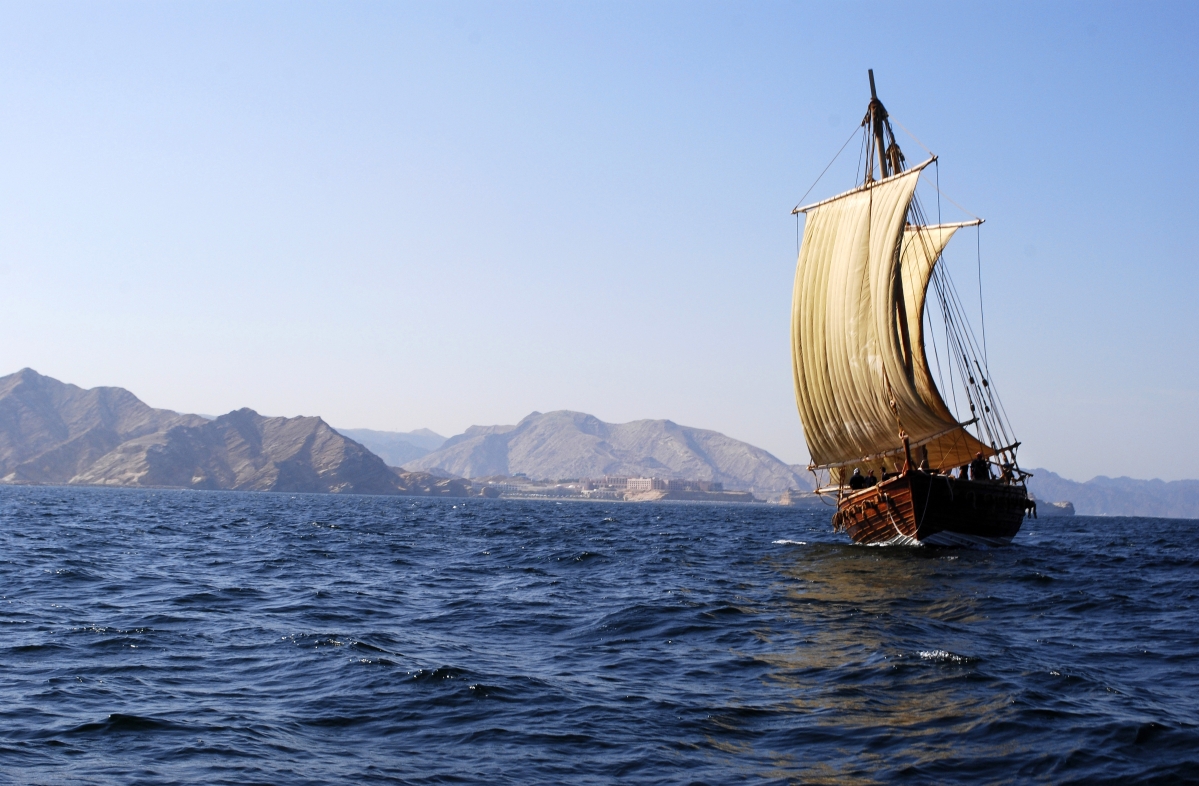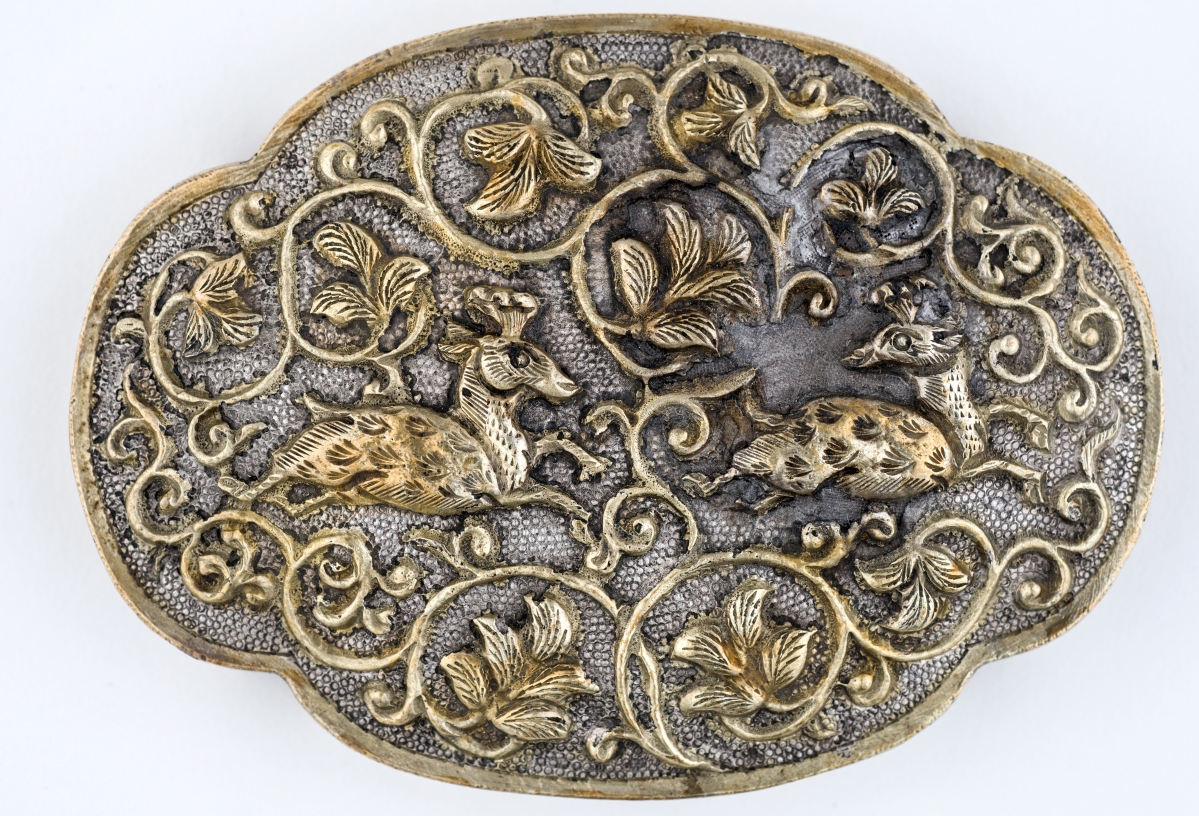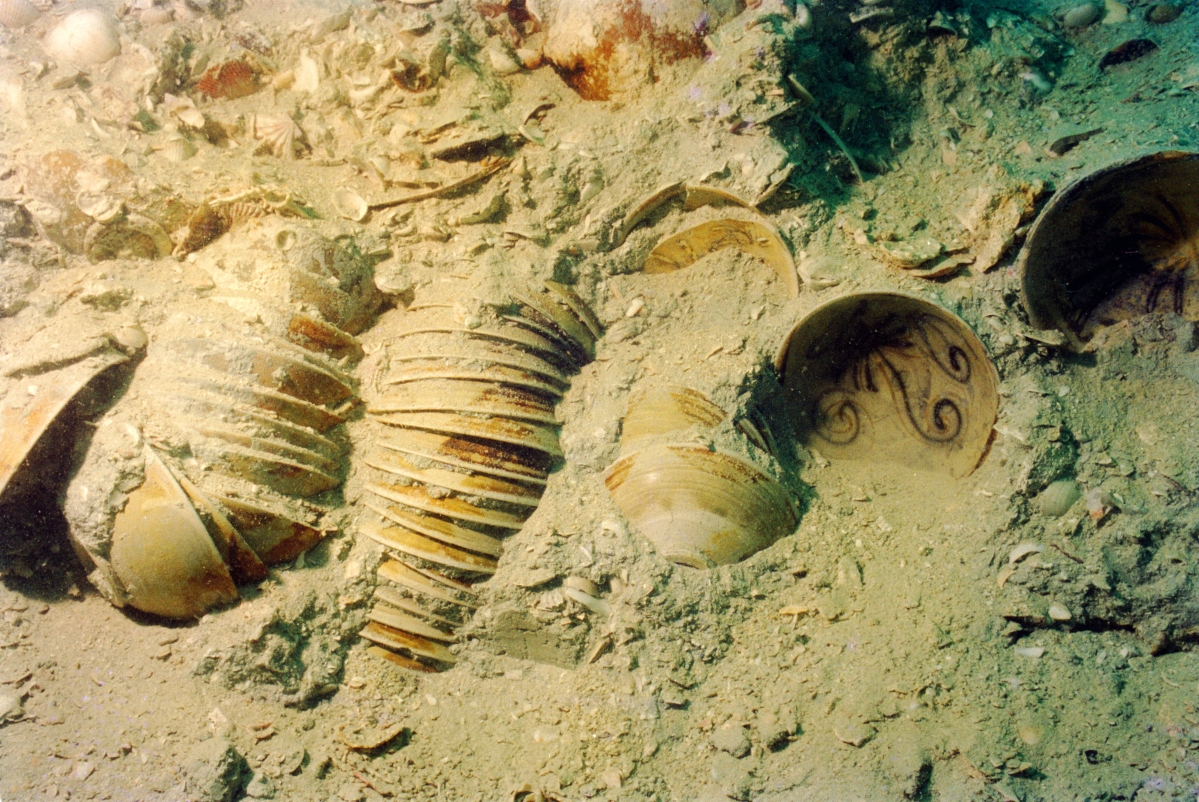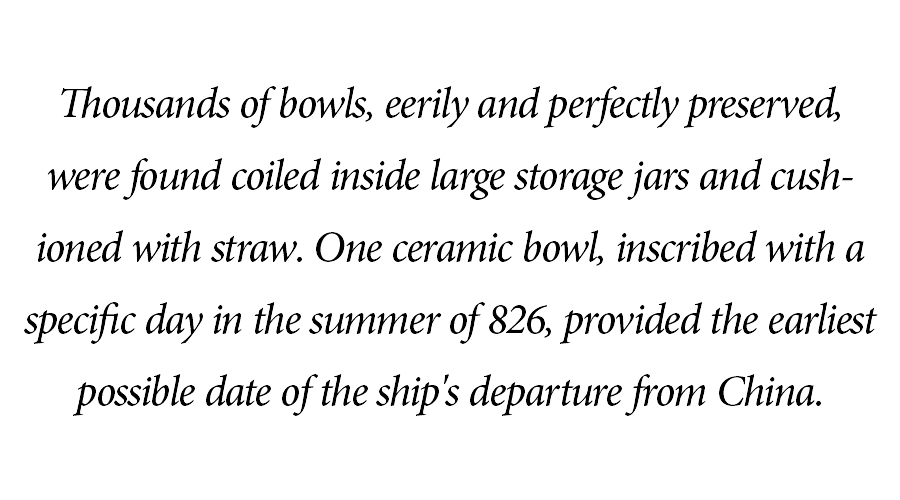By Kristin Nord
NEW YORK CITY – In “Secrets of The Sea: A Tang Shipwreck and Early Trade in Asia,” running through June 4 at the Asia Society Museum, 78 choice artifacts conjure trade on the flourishing maritime silk route that extended from the Abbasid caliphate to the Tang empire in the Ninth Century. As it turns out, active trading had been underway centuries before the Portuguese had arrived in search of goods and spices.
Curator Adrianna Proser hopes visitors will find the show intriguing, not only for its treasures but for its exploration “of the level of activity and exchange and trade that was crossing a large segment of the world so much earlier than people realized.”
The Abbasid caliphate included Iran, Iraq and Egypt into North Africa at the apex of its wealth and influence, while the Tang empire extended from the East China Sea to the oases of Central Asia. Ships were able to travel with heavy and fragile loads between the ports of the Gulf and the Arabian Sea and those on China’s south and east coasts, thus enabling the exchange of raw materials and goods for a wide range of ceramics and other precious finished products. The 57-foot trader now referred to as the Belitung was among the vessels to ply the often-treacherous waters.
While we may never know for sure what happened to the ship, Regina Krahl, an independent researcher of Chinese art at the British Museum, and the author of Shipwrecked, Tang Treasures and Monsoon Winds, believes it was likely blown off course onto a reef near Belitung island. One can only imagine the excitement on that day in August 1998, when a fisherman diving for sea cucumbers spotted the wreck poking through shallow waters.
“Among the most remarkable aspects of the exhibition is that so many of these objects – under water for more than 1,000 years – look as if they were just made yesterday,” Proser said.
Thousands of bowls, eerily and perfectly preserved, were found coiled inside large storage jars and cushioned with straw. One ceramic bowl, inscribed with a specific day in the summer of 826, provided the earliest possible date of the ship’s departure from China.
About 95 percent of the ceramics, or approximately 57,000 pieces, were utilitarian Changsha wares, ranging from bowls, ewers, jars, cups and cup stands to circular boxes, incense burners and milling stones. According to Liu Yang, curator of Chinese art at the Art Gallery of New South Wales, Sydney, they were made specifically for this foreign market and ornamented typically with two basic designs – that of a lobed or mushroomlike head and a spiral of different forms with a curving tail – employed in many variations. Wares with landscape or animistic motifs were also recovered, including the legendary sea monster, the Mankara, Yang said, “that destroyed ships, harmed voyagers and engulfed everything in its path.”
Rare, green-glazed Yue tablewares from Zhejang, large storage jars from Guangzhou, high-quality white-glazed stoneware from Hebei and Henan, white and green-splashed stoneware from Gongxian and whiteware from Hue were other exquisite goods that were bound for diverse destinations.
It is mind-boggling on some level to consider just how long ago these treasures were created, and to see how innovative Chinese artisans were in adapting their products to appeal to regional tastes. Green-splashed whiteware, for instance, featured the lozenge floral design and palmate projections popular in the region encompassing Iran and Iraq. Even rarer, high-fired white porcelain, decorated with cobalt procured from Persia, employed favorite Persian motifs.

The Jewel of Muscat, a ship constructed based on the Belitung wreck and evidence of early West Asian shipbuilding, during sea trials off Oman. —Michael Flecker photo
Dr John Guy, curator of South and Southeast Asian art, Metropolitan Museum of Art, hailed the cargo as “the largest and most comprehensive assemblage of Chinese glazed ceramics from the Tang dynasty found to date.
“Together with a group of rare gold and silver vessels and silver ingots, it is one of the most important hoards of artifacts ever discovered at a single site,” he added.
Michael Flecker, a maritime archeologist who analyzed the ship’s materials and construction methods, identified the vessel from its use of African timbers and hemp-stitching as an Arab dhow. Marco Polo encountered dhows like this on his voyages and dismissed them in his journal “as being of the worst kind, and dangerous for navigation, exposing the merchants and others who make use of them to great dangers.”
As scholars began to piece together the Belitung‘s story, artifacts suggested that the vessel was manned by an international crew. These seamen lived and slept on deck, while below deck heavy loads of cargo were tightly packed with lead bars that provided ballast. This was an unwieldy arrangement at best: If the ship sat too high in the water, it would be in danger of capsizing; too low and it could be swamped by waves. Additional adjustments were imperative as cargo was loaded and unloaded at ports of call.
Almost immediately after the wreck was spotted looting began. Seeking to secure the site, the Indonesian government contracted with Seabed Explorations, a New Zealand-based commercial excavation company, to begin salvage work around-the-clock. Salvors, working from a platform and transferring artifacts to conservation and storage facilities on land each day, recovered 60,000 objects over two seasons. Nonetheless, when the project ceased some 20,000 additional objects were missing. Because Flecker had joined the team later, in the second season, full documentation proved impossible.
Six years after the Belitung‘s discovery a subsidiary corporation established by the Singapore government purchased the cargo for $32 million. Today, the ship’s contents are secured in Singapore’s Asian Civilizations Museum (ACM), where a permanent exhibition of 8,000 objects is on display and the remaining 50,000 objects are housed and preserved for research. The Asia Society Museum exhibition employs artifacts and video from ACM and augments these offerings with works of the Tang dynasty from its permanent collection.
An outcry from archaeologists over the methods employed in the salvage efforts led to the cancellation of an earlier exhibit at the Smithsonian in 2012.
“The Smithsonian found itself caught between contradictory imperatives: the desire to make historically significant objects visible to the public, and the principle that commercial involvement had tainted the objects forever,” writes Natali Pearson, an expert in underwater cultural heritage, in an article that appeared in Taansa Review, the journal of Asian Arts Society of Australia.

Four-lobed oval box with deer and lion decoration, China, Tang dynasty, circa 825–50, silver parcel gilt, 1 by 3½ by 2½ inches. Asian Civilizations Museum, Singapore. ACS, Tang Shipwreck Collection.
This sometimes polarizing issue is of particular relevance throughout the Indonesian archipelago, where some 400 shipwrecks have been identified to date. Commercial salvage remains a highly lucrative enterprise. Companies have been known to spend millions of dollars searching for and mining a shipwreck in hope of selling the artifacts for a huge profit at the end. (An egregious example was when a Dutch East Indian Trading vessel was salvaged by British treasure hunter Michael Hatcher. The gold and porcelain Hatcher retrieved from the Geldermalsen was auctioned off in 1986 by Christie’s Amsterdam for more than $10 million, while the rest of the cargo was lost).
A 2001 UNESCO Convention on the Protection of the Underwater Cultural Heritage stressed its preference for “in-situ conservation” and stipulated that underwater cultural heritage “shall not be commercially exploited.” Pearson noted, however, “There was evidence looters were active on the Belitung wreck site both before Seabed received its excavation permit and during the monsoon-enforced break in operations.”
“Had in-situ preservation been favored in Indonesia,’ she added, “the Belitung site would surely have been destroyed.”
Flecker has urged archeologists, governments and salvors to work together “to document those sites and artifacts and commercial salvage efforts before too much is lost.” Indeed, in such instances, compromise may be the only viable option. When Flecker returned to the site in 2013, “the entire hull had been ripped apart by looters.” Even if an army of scientists had returned with him, “there would have been nothing left to record.”
“The matters surrounding preservation and provenance and looting are complex,” Proser said, “and yet there is a tendency to see these issues in terms of black and white.” At times, she added, “Taking a purist approach can mean one ends up with destruction rather than what one is hoping to achieve.”
Asia Society has not shied away from this debate and co-sponsored a symposium last month at Columbia University. At the same time, “Secrets of the Sea: a Tang Shipwreck and Early Trade in Asia” has done a formidable job in correcting Eurocentric distortions of history in an exhibit that is rich in facts and wonder.
Asia Society Museum is at 725 Park Avenue. Hours are Tuesday through Sunday, 11 am to 6 pm and Friday from 11 am to 9 pm. General admission is $12, senior $10, students $7, and free for members or persons under 16. For information, 212-288-6400 or www.asiasociety.org.
Kristin Nord’s work has appeared in many publications in New England and Canada




















